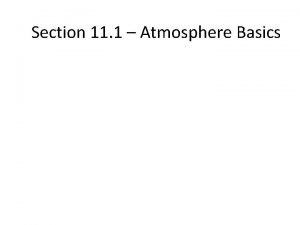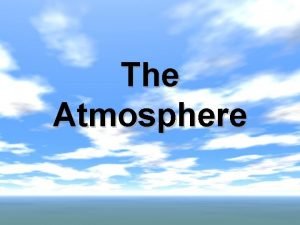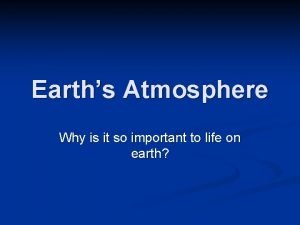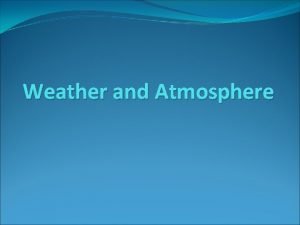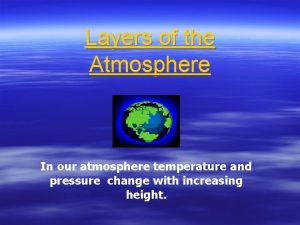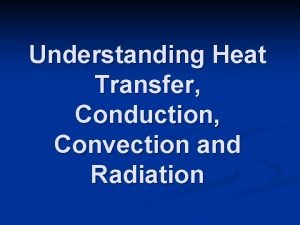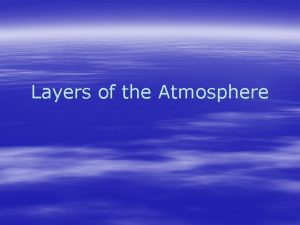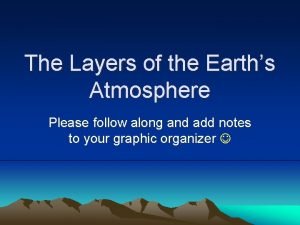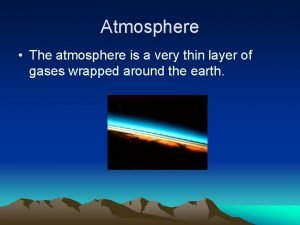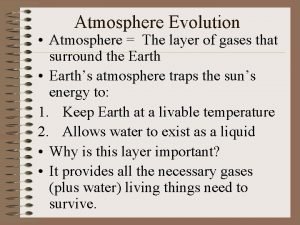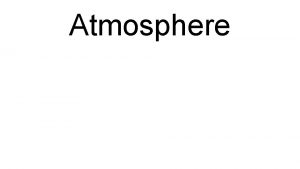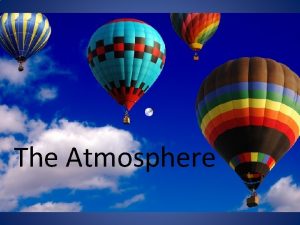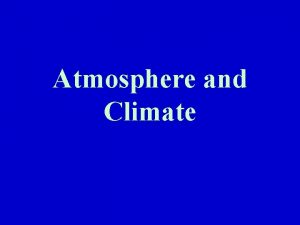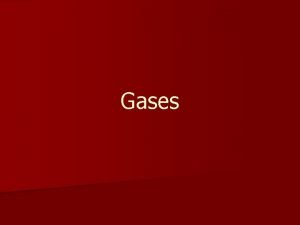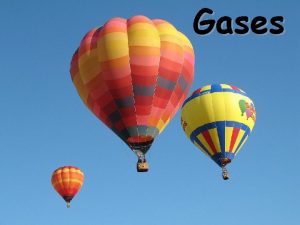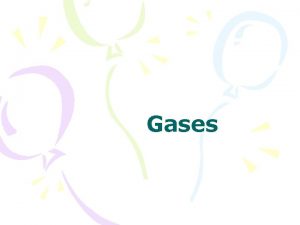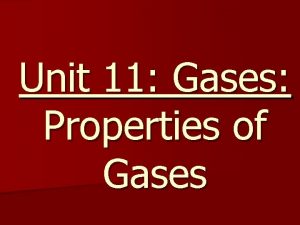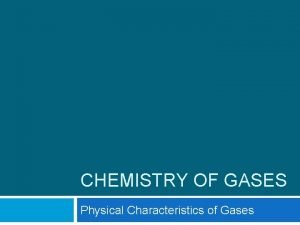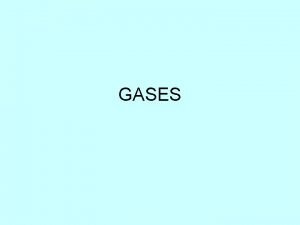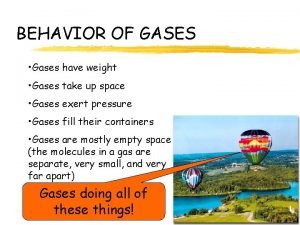The Atmosphere Atmosphere n The layer of gases


















- Slides: 18

The Atmosphere

Atmosphere n The layer of gases that surrounds the earth. n In addition to providing the necessary gases to breathe, the atmosphere protects you from the Sun’s damaging rays. n Weather is the condition of the atmosphere at any given time.

Atmospheric Gases n The planet Earth has a layer of gases enveloping it, which is called the atmosphere. n The atmosphere is a mixture of gases. – Nitrogen makes up approximately 78% of the atmosphere volume, oxygen 21% and the remaining 1% is composed of small amounts of helium, argon, neon, krypton, xenon, radon, and carbon dioxide.

Water n Water is also found in the atmosphere. – Liquid water (water droplets) and solid water (snow and ice crystals) are found in the clouds. – Most water is found in gas called water vapor.

Atmospheric Pressure n Air has weight, and the weight of the atmosphere exerts a push on the surface of Earth. – This push or pressure has been calculated to be 1 kg per square centimeter at sea level.

Atmospheric Pressure n As you move farther away from Earth’s surface, fewer gas molecules are above you so air pressure is less. n Therefore as altitude, height, increases, air pressure decreases.

Atmospheric Temperature n Air temperature also changes as altitude increases. n The temperature differences result mainly from the way solar energy is absorbed as it moves through the atmosphere. – Some parts of the atmosphere are warmer because they contain a high percentage of gases that absorb solar energy.

Atmospheric Layers n The atmosphere has different layers of strata. n Each layer has its own particular characteristics. n Layers include: – Troposphere – Stratosphere – Mesosphere – Thermosphere – Ionosphere

Troposphere n This is the layer immediately surrounding our planet. n Almost all of the Earth’s carbon dioxide, water vapor, clouds, air pollution, weather, and life forms are in the troposphere. – The densest atmospheric layer. § Contains almost 90% of the atmosphere’s total mass.

Stratosphere The layer of our atmosphere just above the troposphere. n Gases in the stratosphere are layered and do not mix as much as gases in the troposphere. n The lower stratosphere is extremely cold, averaging temperatures near -60°C. n – – Temperature rises as altitude increases. This happens because ozone in the stratosphere absorb ultraviolet radiation from the sun, which warms the air.

Mesosphere n This layer extends from the top of the stratosphere to an additional 80 km. n It is the coldest layer. – Temperatures decrease as altitude increases. – Temperatures can be as low as -93°C.

Thermosphere n Above the mesosphere is thermosphere, which extends to 400 km or beyond. n Temperature increases as altitude increases. n The temperatures are very high and may reach well over 1, 000°C.

The Ionosphere n In the upper mesosphere and lower part of thermosphere n Contains charged particles known as ions. n Radio waves are reflected back to earth by this layer n This is also the region of the Northern Lights.




The Greenhouse Effect n 70% of the radiation that enter Earth’s atmosphere is absorbed by clouds and by the Earth’s surface, the greenhouse effect keeps Earth from losing thermal energy. – The greenhouse effect is the warming of the surface and lower atmosphere of Earth that occurs when water vapor, carbon dioxide, and other gases absorb and reradiate thermal energy.

Greenhouse Gases & Global Warming n An increase in average global temperatures is known as global warming. – Some scientists have hypothesized that an increase in greenhouse gases in the atmosphere is the cause of the global warming. – If global warming continues, global climate patterns could be affected which would affect living things in those areas.
 Is a mixture of several gases
Is a mixture of several gases Gases on earth's atmosphere
Gases on earth's atmosphere A thin layer of gases surrounding earth
A thin layer of gases surrounding earth Layers of earth atmosphere
Layers of earth atmosphere Hottest layer of atmosphere
Hottest layer of atmosphere Temp in mesosphere
Temp in mesosphere Hottest layer of atmosphere
Hottest layer of atmosphere What is the first layer of the atmosphere
What is the first layer of the atmosphere Thermosphere pictures
Thermosphere pictures The atmosphere layer is too thin
The atmosphere layer is too thin What is atmosphere
What is atmosphere Secure socket layer and transport layer security
Secure socket layer and transport layer security Layer 6 presentation layer
Layer 6 presentation layer Layer-by-layer assembly
Layer-by-layer assembly Fig 19
Fig 19 Secure socket layer and transport layer security
Secure socket layer and transport layer security Layer 2 vs layer 3 bitstream
Layer 2 vs layer 3 bitstream Pathway of food from mouth to anus
Pathway of food from mouth to anus Secure socket layer and transport layer security
Secure socket layer and transport layer security

